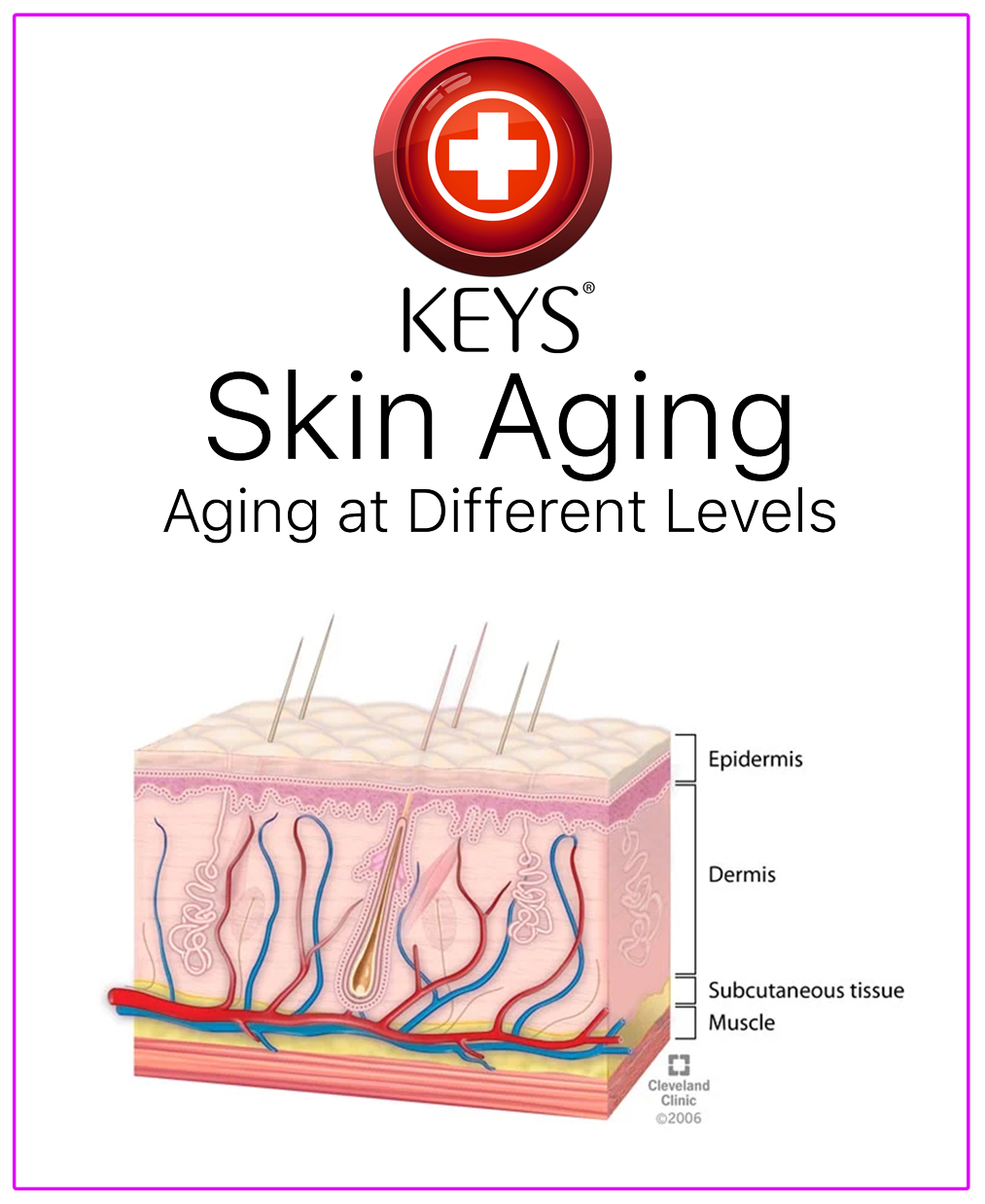Understanding the Skin Aging Process of Different Skin Layers Introduction Our skin is the body’s largest organ. Yes, it is an organ that undergoes aging at different levels and in different ways. The human skin is a complex organ composed of multiple layers with distinct functions. As we age, the skin undergoes a gradual and intricate process of aging, which can be attributed to both intrinsic and extrinsic factors. This article aims to delve into the intricate mechanisms behind the aging of different layers of the skin, shedding light on the cellular and molecular changes that contribute to the visible signs of aging. Epidermis The epidermis is the outermost layer of the skin and serves as a barrier against environmental aggressors. It comprises several sublayers, including the stratum corneum, stratum granulosum, stratum spinosum, and stratum basale. With aging, the epidermis undergoes various changes: Thinning: The epidermis becomes thinner due to a decrease in the proliferation rate of cells in the stratum basale. This results in a reduced ability to repair and regenerate the skin. Decreased Barrier Function: The lipid matrix in the stratum corneum, responsible for maintaining skin hydration and protecting against pathogens, weakens. This leads to increased transepidermal water loss and […]
Read more
You must be logged in to post a comment.